Projects
Conservation of a Mould-Damaged Eighteenth-Century Wine Account Book in a Parchment Stationery Binding
The aim of the treatment was for all functional elements of the text block and binding to be repaired and reused, in order to enable safe handling by researchers. The critical factor was the extensive mould damage to the first third of the paper text block, the parchment cover, and the breakdown of the binding structure. There were significant losses and several pages were too weak to be handled without loss. The damaged binding was taken apart, repaired and then reused – apart from the sewing structure which was reconstructed with conservation grade materials. Adhesives and techniques have been chosen to minimise the risk of further mould damage. The binding is now offer to better protect and support to movement of the text block and the resized and repaired pages are robust enough to endure handling.
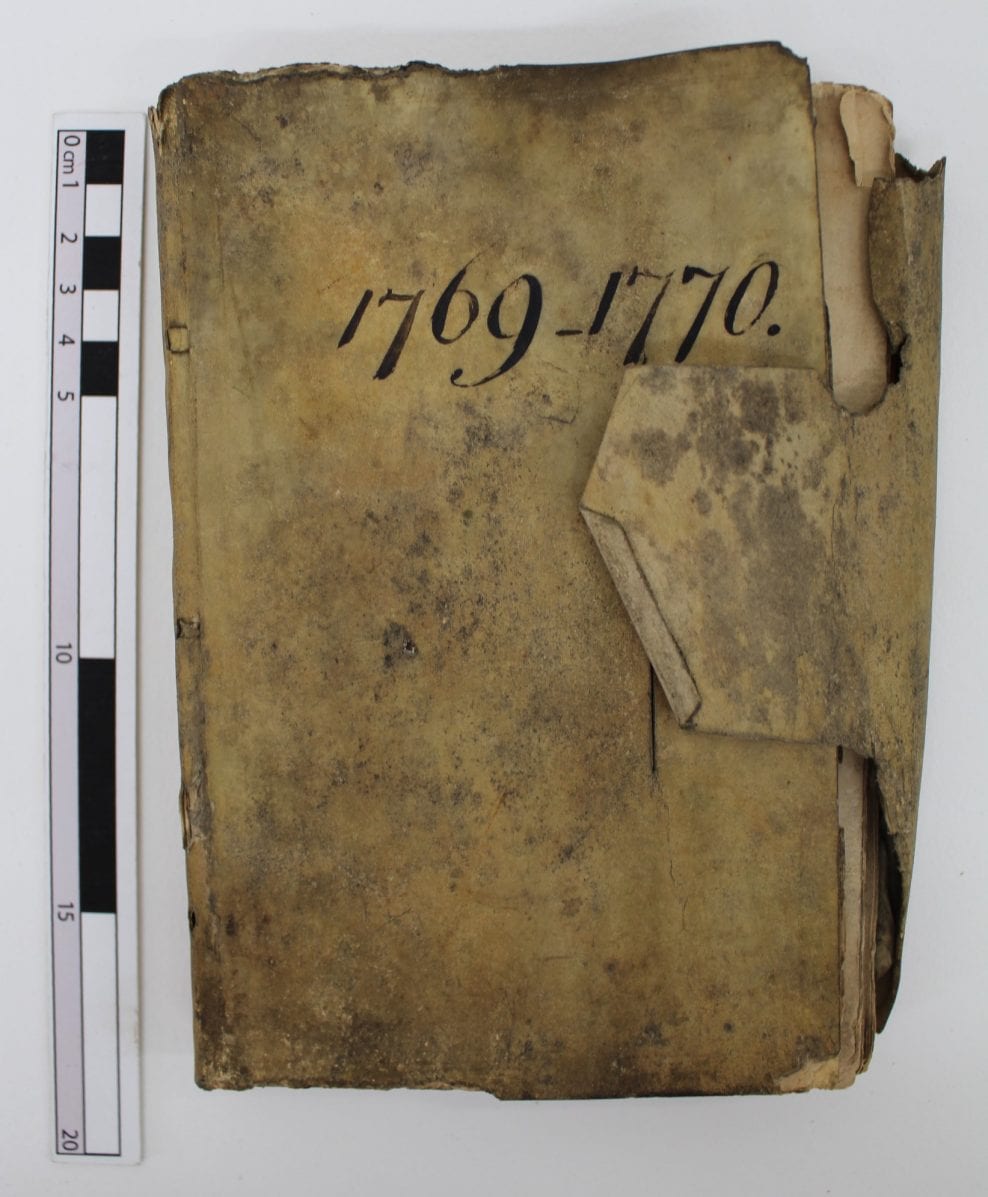
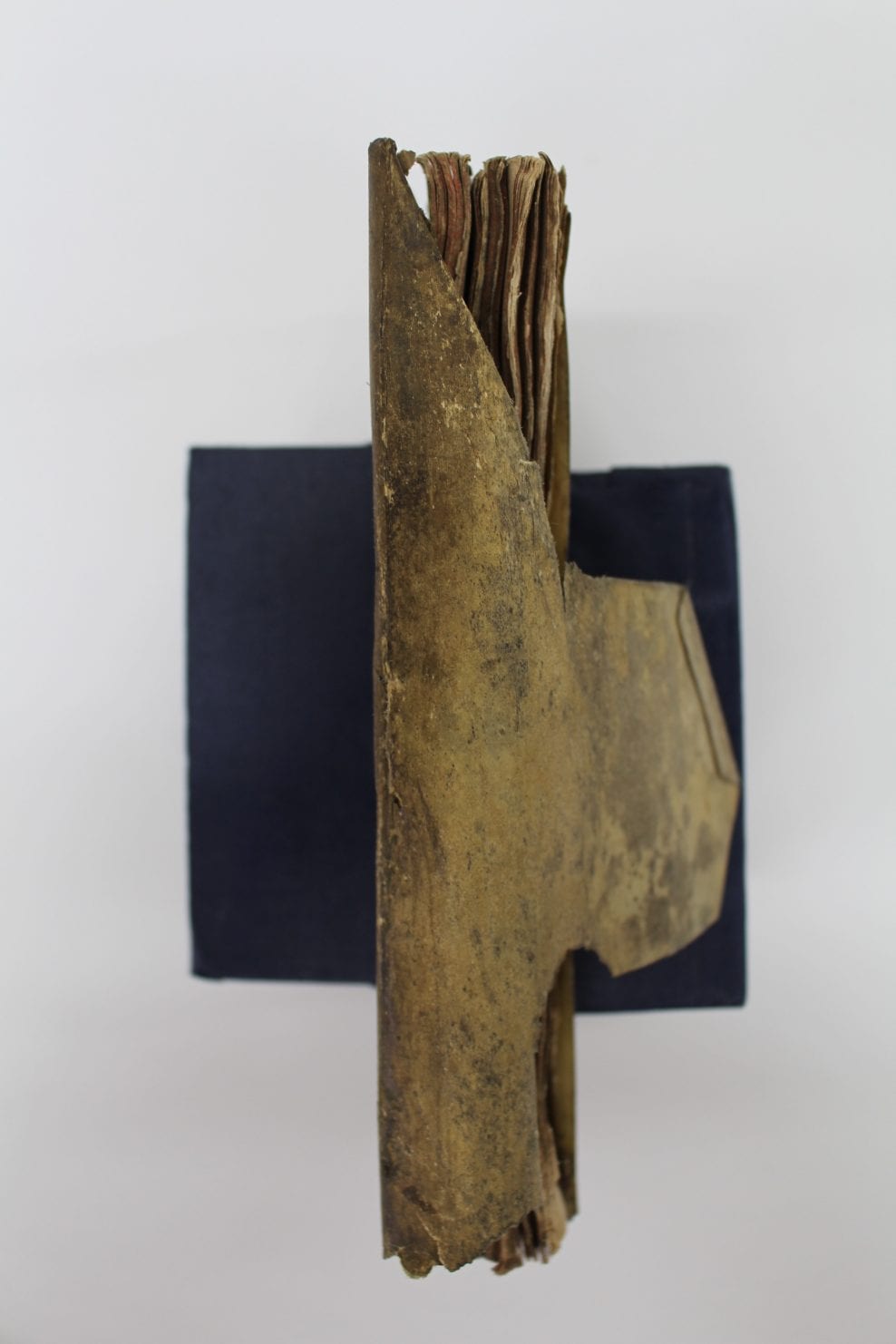
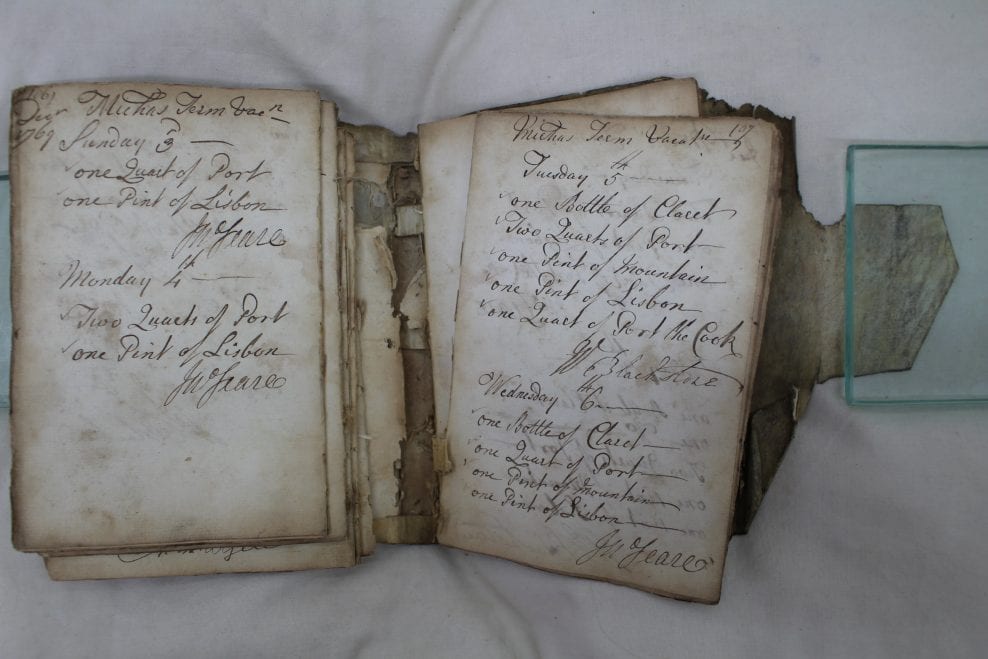
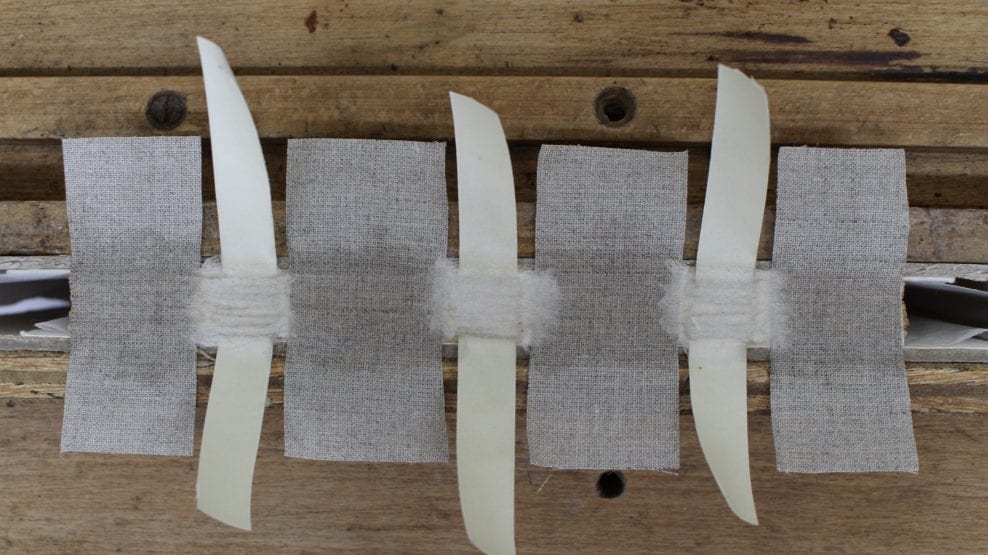
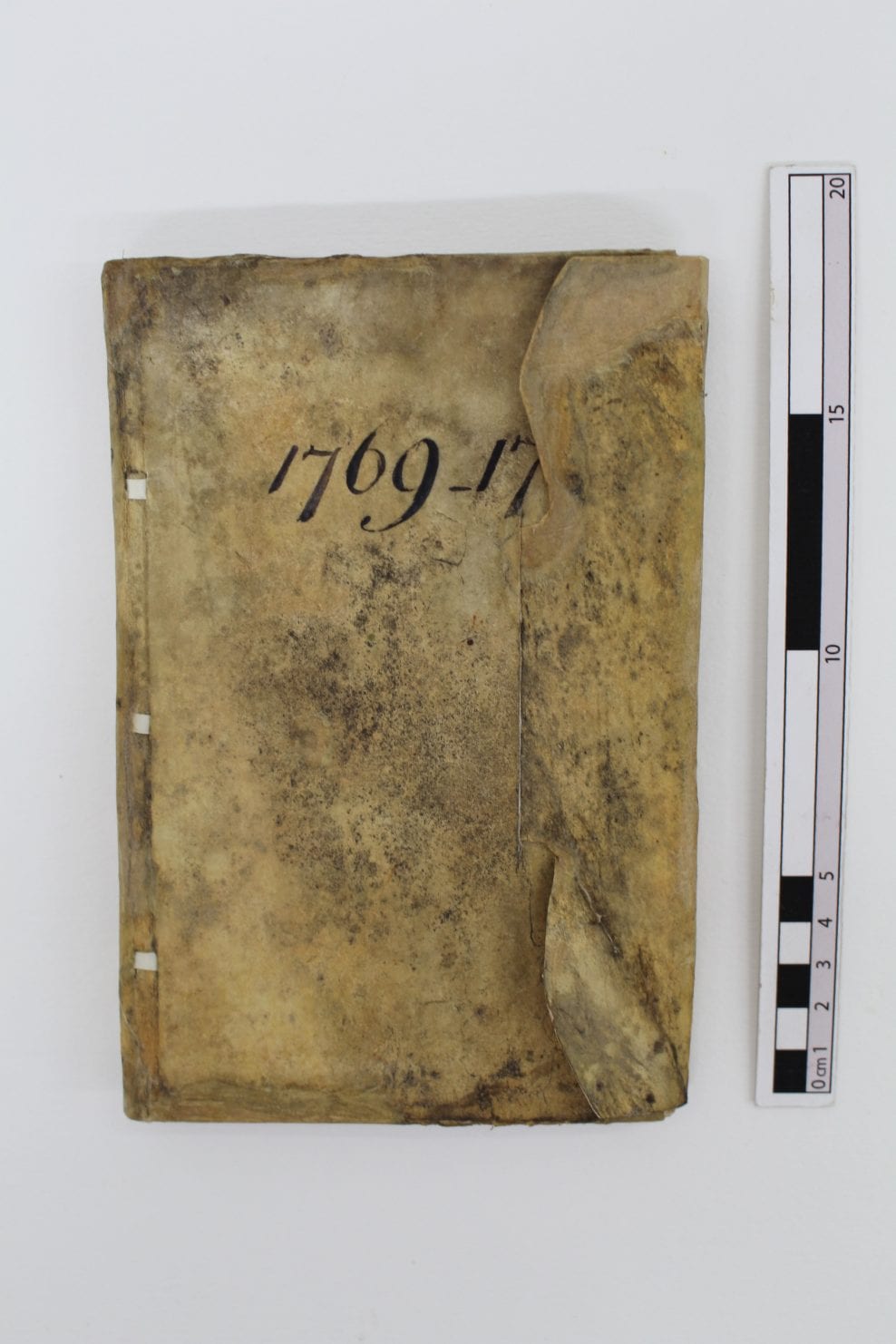
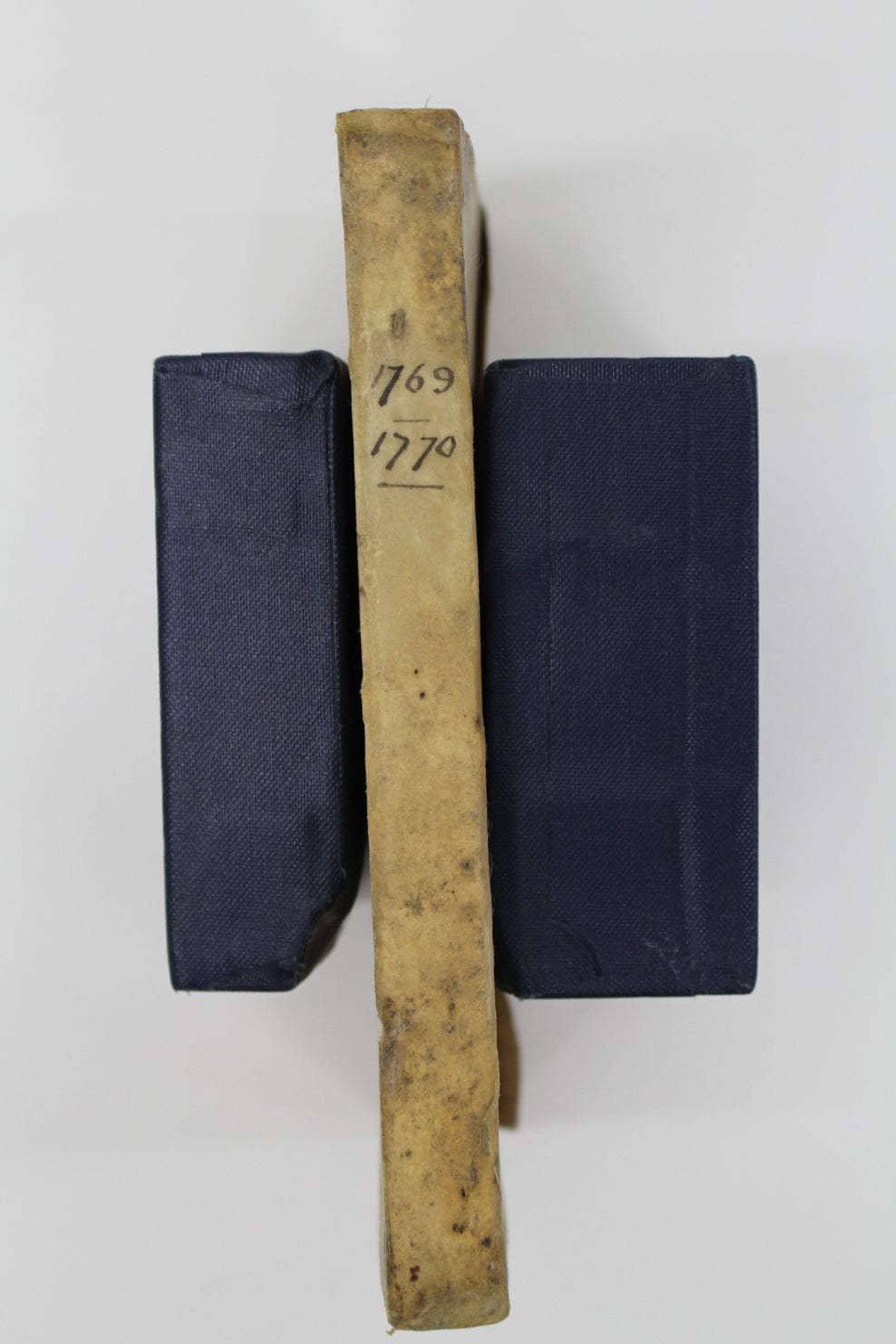
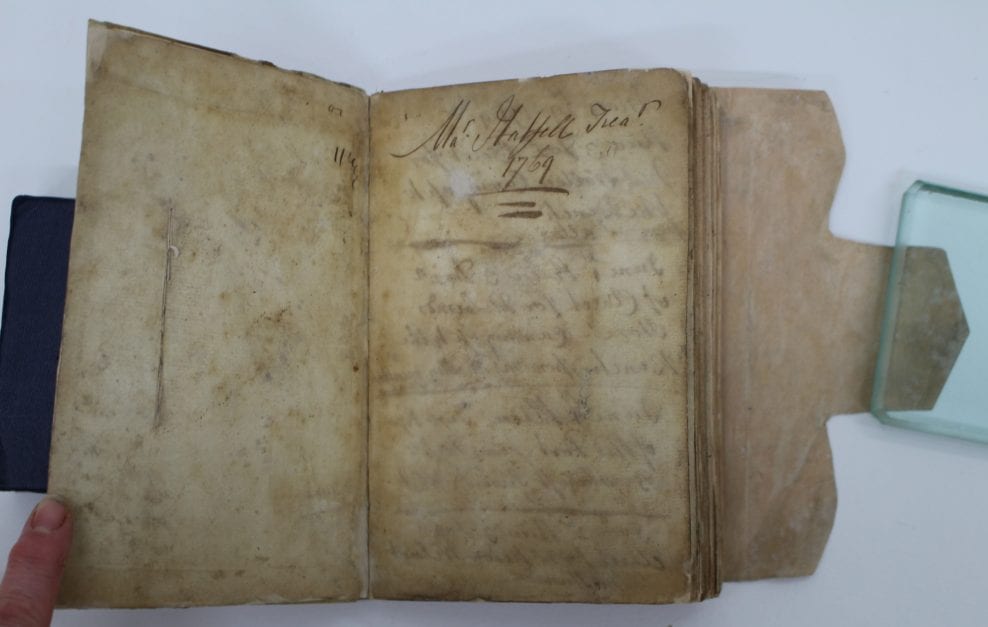
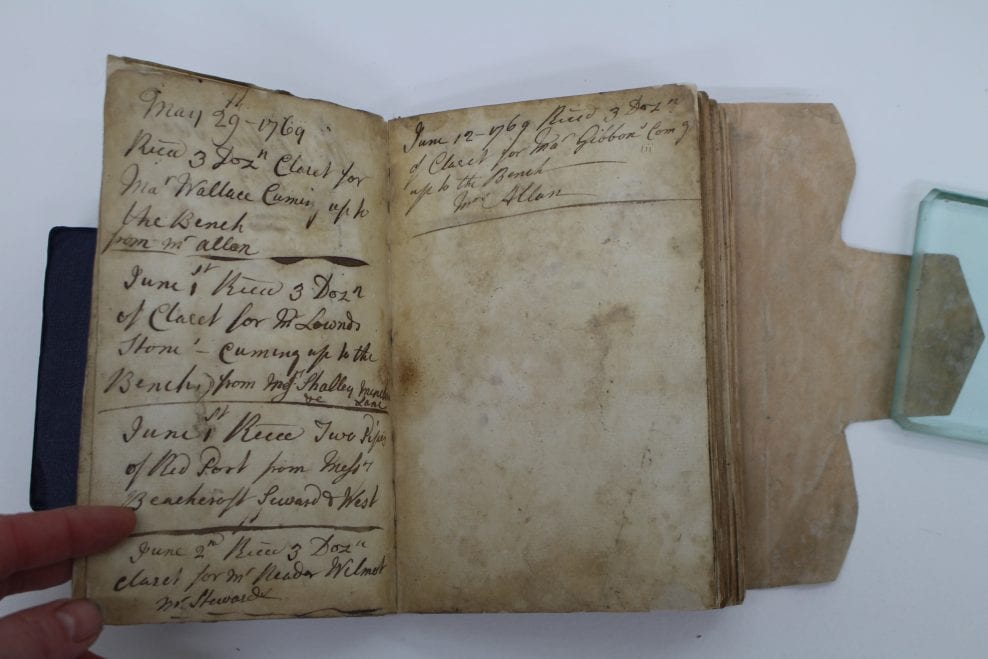
The binding is a full parchment stationery “wallet” binding, with an integral foredge flap and pocket. It was sewn on 3 parchment tapes, split to provide lacings through the cover and decorated with sprinkled edges, blind rulings and an iron gall ink inscription on the front cover. Binding overall very poor condition, due to collapse of the binding and the evident mould damage. All parts of the binding are vulnerable. The sewing has completely collapsed and the binding parts delaminated. There were significant losses to the covering parchment and the condition of the paper text block was extremely poor with extensive mould damage to the first 30 pages. The manuscript was written in iron gall ink which was stable.
After careful surface cleaning and disassembly, the text block was taken apart and the pages resized and repaired using extremely light weight Japanese tissues with infills of a similarly matched western handmade paper. Attention was paid to minimising the swell of the repairs so that the pages still fit inside the repaired cover. The sections were resewn onto new parchment tapes. The binding was reconstructed using infills of toned paper and Japanese tissue and gelatine as the adhesive. All elements were reconstructed following the original engineered structure.

